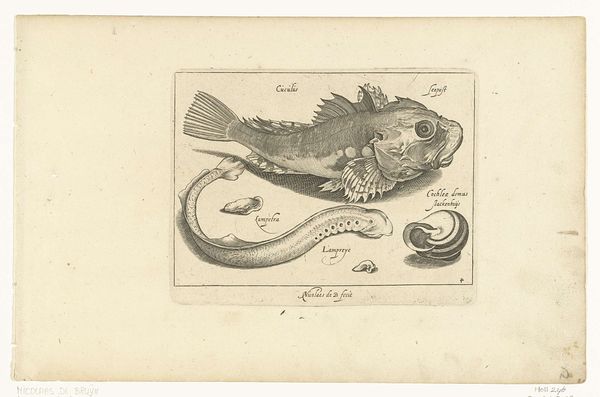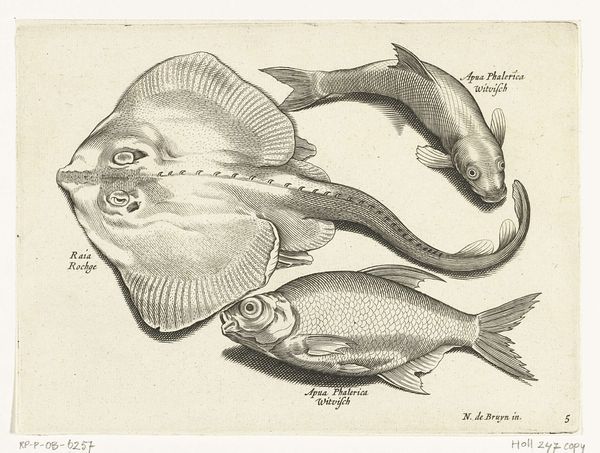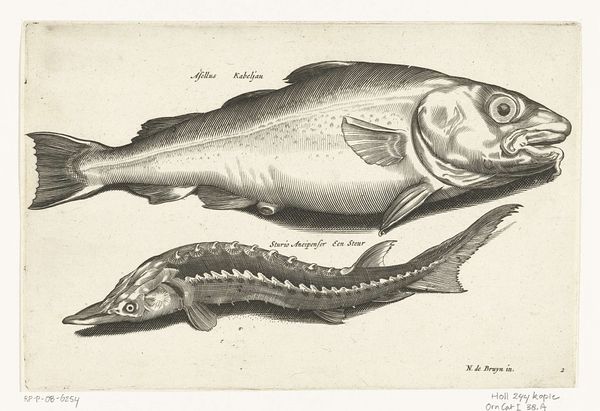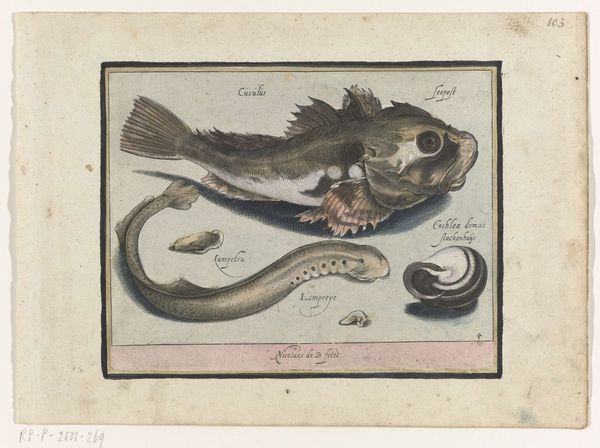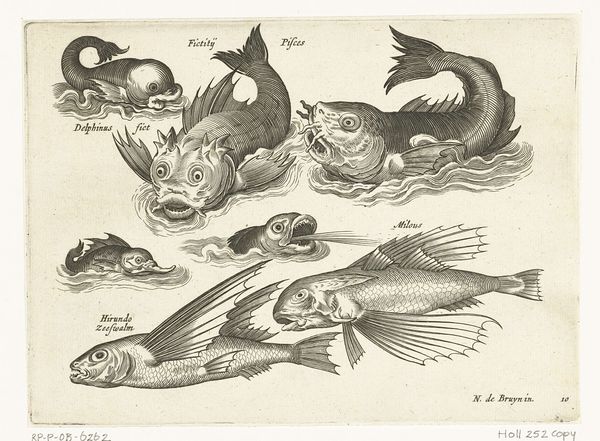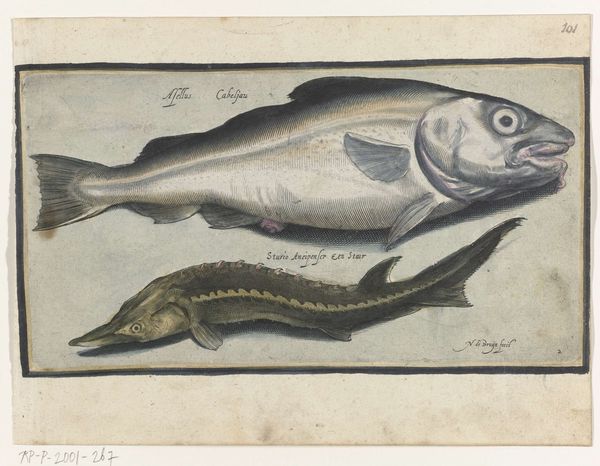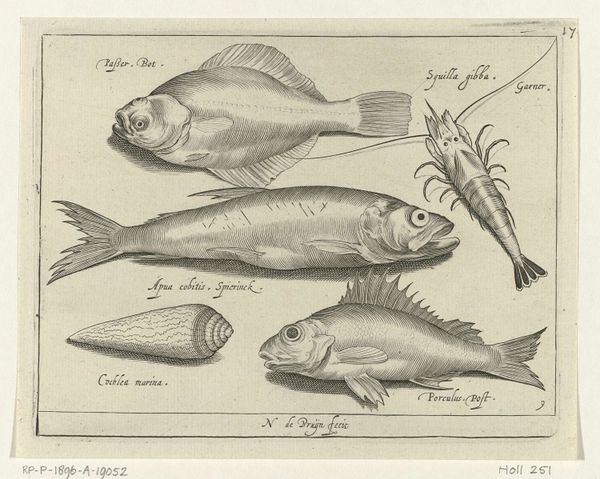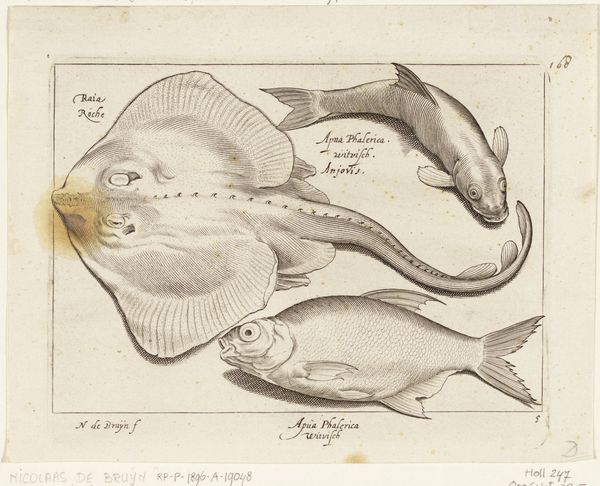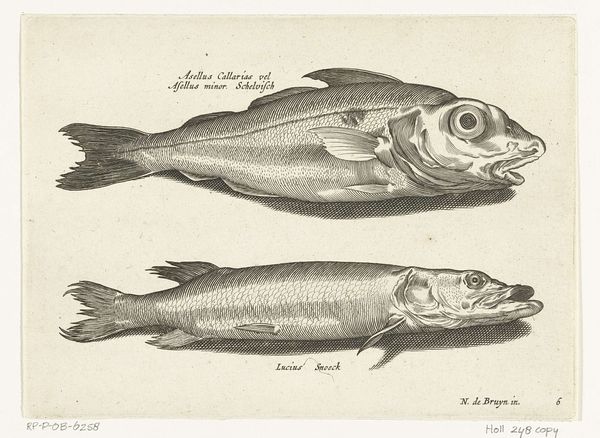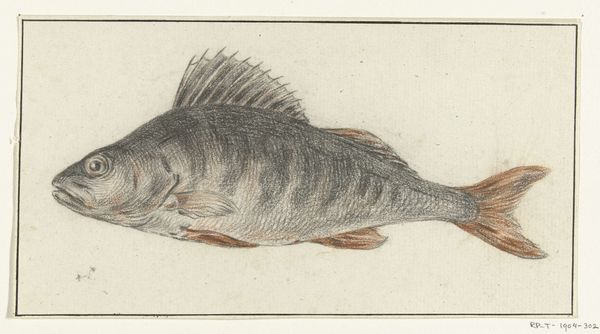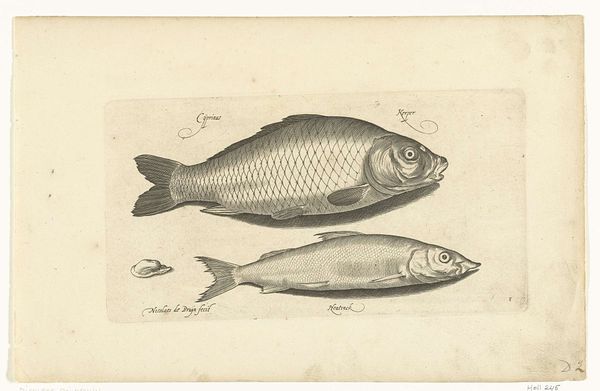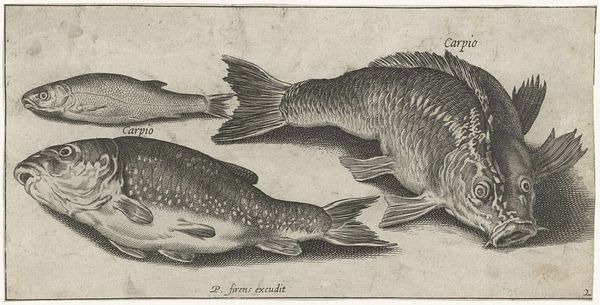
print, etching, intaglio, engraving
#
dutch-golden-age
# print
#
etching
#
intaglio
#
old engraving style
#
engraving
#
realism
Dimensions: height 132 mm, width 203 mm
Copyright: Rijks Museum: Open Domain
Editor: Here we have "Poon, prik en slakkehuis," an engraving likely made sometime between 1581 and 1652 by an anonymous artist. It depicts a variety of sea creatures, rendered with remarkable detail. What do you see in this piece, beyond just the naturalistic depiction? Curator: I see a snapshot of early scientific inquiry intertwined with socio-political implications. These meticulously rendered prints weren’t just about documenting nature. They were instruments of power, reflecting a burgeoning European culture of exploration and, indeed, exploitation. Consider the act of naming these creatures, "Caculus", "Lampetra" etc. Who gets to name? Whose knowledge counts? Editor: So, it's about claiming ownership through categorization? Curator: Precisely. Natural history illustrations like these became visual tools that facilitated colonization. By classifying and depicting the natural world, European powers laid a claim to it, establishing a hierarchy where European knowledge and perspectives were centered, and often erased or devalued the understanding held by Indigenous communities. This act mirrors modern-day practices that are still relevant today. Editor: I see your point. It's easy to get lost in the detail and forget the broader context. Curator: It prompts us to examine the ethical implications of scientific illustration. Consider how seemingly objective depictions can reinforce power dynamics and shape our understanding of the world. What voices are absent from this image, and what perspectives are lost in the pursuit of categorization? Editor: It gives a lot to think about. It definitely makes me want to explore further what perspectives are left out of those historical depictions and challenge how we view the natural world. Curator: Exactly! By critically engaging with works like these, we can unpack their historical context and create a more inclusive and equitable dialogue about the relationship between art, power, and knowledge.
Comments
No comments
Be the first to comment and join the conversation on the ultimate creative platform.
